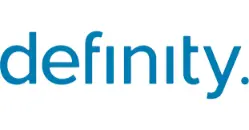There’s no argument: traditional change management approaches are resource-heavy. To do things by the book, you need big teams that include communication specialists, instructional designers, business analysts, trainers, and, of course, change managers. These large, multi-disciplinary teams ensure that every aspect of a change initiative is covered, from communication to training to the finer details of process analysis. But increasingly, organizations don’t have the time or budget to allocate these kinds of resources.
Today’s organizations are leaner, more agile, and more focused on doing more with less. The successful change managers in these environments are not the ones who follow a rigid, resource-intensive approach. They are the “MacGyvers” of change, known for their resourcefulness, adaptability, and the ability to deliver results with limited support. These agile change agents are versatile and creative, able to juggle multiple roles and responsibilities while continuously engaging and activating networks of talent and influence.
So, what makes these modern change managers stand out? How do they deliver impactful change when resources are constrained? Here are ten tips for how you can be a resourceful, agile change manager and still achieve your goals when your team or budget is tight.
1. Build and Activate Your Networks
Resourceful change managers understand the power of networks. Whether it’s internal networks of influencers or external networks of experts, they know how to leverage relationships to gain buy-in, advice, or even practical help. Engaging with stakeholders early and often creates a shared ownership of the change initiative and spreads the workload across the organization. Look for talent and allies in other departments who can provide insight, feedback, or a helping hand when needed.
2. Master the Tools of the Trade
In a world with constrained resources, being proficient in digital tools can make all the difference. PowerPoint, Canva, Miro, and Mural are just a few examples of how a good change manager can make a big impact with minimal cost. Whether it’s creating visually appealing communication materials, mapping out change journeys, or running interactive workshops, these tools allow you to deliver engaging and effective change initiatives without needing a full design or communications team.
3. Embrace Micro-Communications
In fast-paced organizations, long-winded emails or hefty reports can fall flat. Agile change managers focus on micro-communications — short, sharp, and to-the-point messages that convey critical information. Think about using bite-sized video updates, infographics, or quick, visually engaging emails to keep everyone informed. The key is to be clear, concise, and impactful with your messaging.
4. Visual and Transparent Communication
Being agile means embracing transparent communication. Visual tools like dashboards or real-time progress updates allow stakeholders to see how a change initiative is progressing. It builds trust and makes it easier to spot problems before they become big issues. When people can clearly see what’s happening, they’re more likely to stay engaged and aligned with the change effort
5. Prioritize Based on Data
Data-driven decision-making is a critical skill for agile change managers. When resources are limited, you can’t afford to waste time or effort on low-priority tasks. Use data to prioritize the work that will have the most impact. Whether it’s employee feedback, performance metrics, or operational data, the ability to analyze and interpret information helps you make the best use of the resources you have.
6. Learn to Be a “Jack / Jill of All Trades”
In resource-constrained environments, you won’t have the luxury of dedicated specialists. The best change managers are able to wear many hats: they can communicate, facilitate, analyze, and strategize. By having a broad range of skills, you can take on different aspects of the project and reduce reliance on large teams.
7. Engage with Agility
Agile change managers embrace both Big A and little a agile principles. Whether you’re working within formal agile frameworks or simply adopting an iterative, flexible approach, agility is about adapting quickly to change. Regularly review your progress, be open to feedback, and adjust your course as necessary. This keeps the momentum going, even in environments where resources are tight.
8. Tap into Cross-Functional Teams
Don’t limit yourself to traditional team structures. Cross-functional teams can provide valuable insights, additional skills, and different perspectives. By involving people from different parts of the organization, you’ll not only create a more well-rounded change initiative but also distribute the workload more effectively.
9. Manage Expectations
When resources are tight, it’s important to manage expectations effectively. Be upfront with stakeholders about what can realistically be achieved with the resources available. By setting clear, attainable goals, you can prevent burnout and keep morale high while still delivering meaningful results.
10. Celebrate Small Wins
Finally, in a resource-constrained environment, it’s important to acknowledge progress, no matter how small. Celebrating quick wins not only boosts morale but also helps to maintain momentum. Small victories add up over time, and recognizing them keeps everyone engaged and motivated to push forward.
In today’s fast-moving world, those who thrive in change management are not the ones with the biggest teams or the largest budgets. They are the resourceful, agile managers who know how to adapt, engage, and innovate. By embracing these ten tips, you can deliver impactful change even when resources are limited. So, whether you’re working on a large-scale transformation or a small organizational shift, remember: it’s not about how much you have, but how you use it.
If you want the tools and skillset to help you with this, you may be interested in our Agile Change Manager Certificate program. We teach you 50 agile change practices and give you 50 + templates to help you do more with less!


































